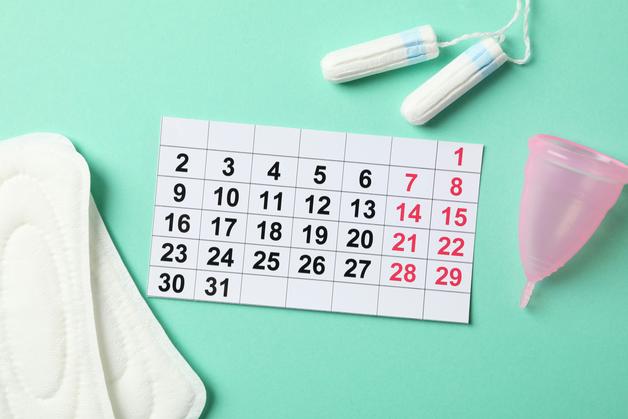Curiosity intensifies. The countdown accelerates. For parents wading through the last weeks of pregnancy, every twinge can spark questions, hope—or plain uncertainty. The anticipation of birth is often charged with excitement and trepidation. Signs of imminent labor, though grounded in biology, sometimes echo a mystery: what is a normal symptom, and what signals that the grand event is truly approaching? If you’re wondering if those tugs in your belly or sudden fatigue are a whisper from nature, you are not alone. Knowing how to read this crescendo of physical and emotional changes can offer both reassurance and readiness as you wait to embrace your baby. Let’s explore what actually happens, how it feels, and what science says about the body’s remarkable runway to delivery—empowering you to meet this threshold with confidence.
Recognizing the Body’s True Signals: The Science behind the Signs of Imminent Labor
You may have heard stories—some dramatic, some barely perceptible—of labor’s onset. Medically, true signs of imminent labor are a blend of unmistakable physiological transitions and subtle internal cues. The uterine muscle’s orchestration, known as regular contractions (increasing in intensity and frequency, arriving every 3 to 5 minutes, each lasting around a minute), is the body’s clearest announcement: the cervix is preparing for delivery. If the sensation still feels ambiguous, think about the quality. Braxton Hicks contractions—those irregular practice tightenings—pale in comparison to the intensity and persistence of true labor. True labor contracts force you to pause, breathe, maybe sway.
And then there’s the rupture of membranes—when the protective amniotic sac releases its fluid. This might present as a dramatic gush or a gentler trickle, always clear, warm, and without strong odor. Any greenish or brown-tinged liquid warrants an immediate call to your provider, as it may point to fetal distress.
Have you experienced a “bloody show”? Medically termed, this passage of mucus streaked with blood, correlates to cervical changes: softening, thinning (effacement), and dilating. It’s one of the classic, visual signs of imminent labor—yet, it can occur days or even a week before actual contractions ramp up.
Other clues? Persistent lower back pain or pelvic discomfort that refuses to subside; a sense of pressure from the baby’s descent; subtle digestive shifts (nausea, loose stools); or the sudden urge to urinate frequently. All emerge from the body’s hormonal choreography, orchestrated by prostaglandins, relaxin, and oxytocin, delicately priming every tissue.
What about the “5-1-1 rule”? If contractions hit every five minutes, last one minute, and persist for over an hour, these signs of imminent labor require prompt evaluation.
Early Labor vs. Imminent Labor: When to Watch, When to Act
Let’s draw a line in the sand. Early labor—the so-called latent phase—can be delightfully ambiguous. Mild, spaced-out contractions. Irregular backaches. Maybe a few creamy or sticky discharges. This phase may linger, stretching from a handful of hours to a couple of days, particularly with a first child. Contrary to cinematic depictions, imminent labor rarely starts with a mad dash to the hospital.
Active labor brings rapid progression. The cervix dilates from 4 to 10 centimeters, driven by contractions that are impossible to ignore. The combined emergence of regular, powerful uterine cramps, water breaking, more pronounced pelvic pressure, and increasing vaginal discharge signals that the moment is drawing close. Any sudden decrease in fetal movement, heavy bleeding, or unbearable pain should prompt immediate contact with your medical team.
Behavioral and Emotional Markers: Nesting Instinct and Shifting Energy
A paradoxical wave of energy—sometimes manifesting as an almost compulsive urge to organize, clean, bake, or rearrange the nursery—can wash over pregnant parents just before birth. This phenomenon, called the nesting instinct, is hormonally driven, often by surges in prolactin and oxytocin. Alternatively, some may feel a profound fatigue—an instinctual need to conserve energy for the big exertion ahead.
If you notice sleep disturbances or sudden bursts of productivity, you are not imagining things. Both fatigue and hyperactivity, as well as emotional lability, arise from the profound hormonal evolution that accompanies the final days. Though not a universal experience, their appearance right alongside classical signs of imminent labor is well documented in clinical literature.
The Baby Drops: Physical Transformations Signal Preparation
One morning, your silhouette may subtly alter. Breathing feels easier but there’s a new heaviness deep in the pelvis. Lightening—when the baby descends into the pelvic cavity—starts a chain reaction. More urgent trips to the bathroom, pelvic discomfort, enhanced lower back pain, a waddling walk, and greater pressure. For some, these signs of imminent labor manifest weeks before contractions; for others, they signal the final days.
Gastrointestinal and Urinary Changes: The Body Readies Itself
Hormonal surges, especially of prostaglandins, affect the gastrointestinal tract. Altered digestion—diarrhea, frequent urination, and even nausea—are part of the body’s physical clearing-out. Far from random, these changes free up space for the uterus during birth and reflect genuine signs of imminent labor. However, persistent, incapacitating symptoms warrant a check-in with your provider to rule out unrelated conditions.
Pain, Discomfort, and Physical Unrest: When Softening Becomes Noticeable
The music of relaxin—softening joints and ligaments—can sound discordant in your body: pronounced backaches, cramps, aches that travel from pelvis to thighs, and restlessness at night. Pain that repeats, intensifies, or fails to resolve with rest points directly to the signs of imminent labor worth monitoring. Sometimes, it’s not a single signal, but a chord of experiences building to an unmistakable symphony.
Sleep and Rest: The Exhausting Countdown
Insomnia, fragmented sleep, or vivid dreams accompany many at the end of pregnancy. Physiologically, the cocktail of hormones—plus the discomfort of an engorged belly—plays havoc with circadian rhythms. Restless nights followed by groggy mornings are classic precursors, as are periods of emotional agitation or worry. Rest whenever possible, and don’t hesitate to seek support—from deep breathing exercises to professional guidance—if sleeplessness takes a toll.
Minor Weight Loss: A Scientific Perspective
It may seem odd amid late-pregnancy swelling and appetite changes, but a small drop in weight—1 to 2 kilograms—is common just before labor. Most often, it results from reduced water retention and the digestive “cleansing” that precedes birth. As long as no fever or severe pain accompanies this shift, it’s a physiological sign of the body’s readiness for labor.
Anatomy in Transition: The Cervix and Its Predictable Unpredictability
During these final days, your care provider may monitor effacement (thinning), softening, and dilation (opening) of the cervix during pelvic exams. Effacement is reported in percentages; dilation, in centimeters (spanning up to 10 for delivery). A cervix transforming from firm to soft, from closed to open, constitutes one of the most technical signs of imminent labor. Importantly, these changes don’t always match subjective symptoms—each parent’s experience is unique.
Mucus Plug Loss and Vaginal Discharge: The Body Makes Way
Has your vaginal discharge become thicker, stickier, or heavier? The loss of the mucus plug, occasionally tinged pink or red, reflects cervical ripening. While dramatic in some, this event can be unnoticed in others. Changes in discharge consistency or volume are routine, provided there’s no foul odor or unusual color. Conversely, any doubts about greenish fluids or bad smells should trigger medical advice.
Labor Progression and Its Infinite Variations
Early labor, active labor, and transition—each phase brings its own rhythm. The first, often mild and protracted. The second, a gathering storm of intensity—contractions strong, dilation fast. The third, the crescendo. While first pregnancies may unfold slowly (8–20 hours for some), subsequent experiences tend to speed up, driven by a body already familiar with the path.
Timing is influenced by prior births, multiple pregnancies, the baby’s position (head down, feet first, sideways), and individual medical histories. Occasionally, intervention becomes essential—not as a failure, but as a careful act of safeguarding life.
Natural Methods and Practical Preparation: Science, Tradition, and Respect for Individual Choices
Gentle physical activity, upright postures, or nipple stimulation feature in the vast oral tradition of labor-inducing tips. Nutritional additions like dates, herbal teas (raspberry leaf is famed), or acupuncture abound in parental circles. What does medicine say? Many of these—while generally safe—should be thoughtfully discussed with your healthcare provider before trying, as responses vary and safety always comes first. Only professional practitioners can perform interventions such as membrane sweeping. Your birth plan is valid, but flexibility remains the key.
Myths and Misconceptions: Reality Vs Expectation
Does labor always start with a flood? Hardly—just 10–15% notice their water breaking as the first sign. Are contractions always obvious? Not quite: early labor is famously sneaky, and false contractions sometimes mimic reality. Prediction apps may offer entertainment but fall short of accurately forecasting signs of imminent labor. It’s entirely possible to skip the nesting urge or experience unusual variations—what matters is listening to your body and communicating with your care team.
When to Seek Immediate Evaluation: Safety Before All
Life sometimes veers off script. Seek urgent assessment for:
- Heavy, persistent bleeding (beyond typical bloody show)
- Severe abdominal or back pain, relentless and unchanging
- Absence of fetal movements when you expect them
- Fever, chills, or malodorous vaginal discharge (signs of possible infection)
- Water breaking or contractions before term (before 37 weeks)
Above all, trust your sense that something is amiss. Expert eyes and ears can make the difference between anxiety and peace of mind.
Confidence in Preparation: Practical Steps for the Final Stretch
As the last days unfold, genuine relief can stem from tangible preparation:
- Pack your hospital bag—remember documents, comfort essentials, snacks, clothes for you and baby
- Refine your birth plan, while staying flexible to changing needs
- Arrange transportation and map backup routes
- Rally your support network, inform key contacts and set up alternative childcare
- Keep a log of contractions—a pen and paper or app can reduce guesswork and stress
- Build in restful moments and ask for support whenever you need a respite
Key Takeaways
- Signs of imminent labor encompass a broad spectrum—physiological, emotional, and behavioral changes that rarely follow a precise script.
- The keystone symptoms include regular, powerful contractions, rupture of membranes, bloody show, advanced cervical changes, digestive shifts, and sometimes minor weight loss or altered sleep.
- Every parent, every pregnancy, and every birth unfolds along its own pathway. Rigid expectations rarely fit, but awareness brings calm and focus.
- Always act swiftly if you notice warning signs: heavy bleeding, absent fetal movement, sudden severe pain, fever, or suspicious fluid.
- Medical professionals and varied resources are by your side—consult, clarify, and lean on available support at every step.
- For tailored tips, free health questionnaires for your child, and reliable, up-to-date guidance, download the Heloa app.
Intuition matters. So does knowledge. The closing days of pregnancy are not merely waiting—they are a crescendo, signaling the threshold of a brand-new chapter. Stay observant, stay gentle with yourself, and draw comfort from the signs that your journey to birth is already underway.
Questions Parents Ask
How accurate are home labor prediction tools or apps?
Home labor prediction tools and apps may seem convenient, but their accuracy is quite limited. While they can help track contractions or remind you of important signs, they can’t reliably determine when labor will actually begin. Each pregnancy is unique and the onset of labor varies widely, even for people with similar due dates or symptoms. If you ever feel uncertain, trust your instincts and reach out to your healthcare provider for personalized guidance—expert advice remains the most reassuring resource.
Can stress or anxiety delay the onset of labor?
Stress and anxiety are natural feelings in the final stages of pregnancy, and you are not alone in experiencing them. While moderate emotional stress does not typically delay labor, ongoing high stress might influence hormone levels in the body, which could affect the timing of labor for some people. However, most labors progress in their own time. Finding supportive ways to relax—such as talking with loved ones, practicing breathing or relaxation techniques, or seeking professional support—can help ease your mind as you prepare to welcome your baby.
Is it possible to confuse early labor symptoms with other conditions?
Absolutely—it’s quite common to question whether certain physical changes signal early labor or are linked to other causes, such as digestive upsets or back pain unrelated to pregnancy. Symptoms like mild cramps, changes in bowel habits, or lower back pain can sometimes create confusion. If any sensation feels unusual or worrisome, or if symptoms escalate, it’s always wise to check in with your healthcare team. They can distinguish between typical late-pregnancy discomforts and the true onset of labor, offering reassurance and support tailored to your situation.

Further reading:









